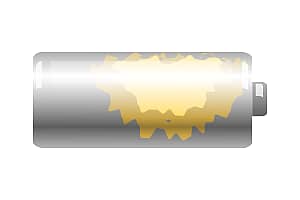The Unfortunate Facts
An analysis of U.S. Consumer Product Safety Commission (CPSC) data over a 10 year period from 1991 to 2001 revealed that over 24,000 children under the age of 10 years old were treated in emergency rooms as the result of receptacle-related incidents. That’s an average of almost 7 children a day! These injuries ranged from minor electrical shocks and burns to more serious conditions. The injuries are caused mostly due to children sticking everyday household items into electrical outlets (receptacles). These items include paperclips, keys, hairpins, screws/nails, or even their fingers. Children are less resistant to electrical shock than adults as they have thinner skin and, among younger children, saliva is often present which promotes conductivity.
An Industry-Wide Preventative Measure
Some preventative measures have been on the market for years, such as plastic outlet caps, but these are not used consistently. In fact, research conducted by Temple University Biokinetics Laboratory found that 47 percent of 4-year-olds studied were able to remove one brand of cap, and 100 percent of 2- and 4-year-olds could remove a second brand—in many cases within 10 seconds! Additionally, adults forget to reinsert the caps after receptacle use, thereby leaving no safeguard for the outlet. It became reasonably clear that a permanently installed solution was needed.
In an effort to improve home-owner safety, the National Electrical Code® (NEC) adopted Tamper-Resistant Receptacles (TRR) as a safety requirement in 2008 by requiring them for 15A and 20A, 125V receptacles used in residential new construction. Each state determines if and when to adopt new versions of the NEC, but as of the date of this publication, 46 of the 50 states now require Tamper-Resistant Receptacles for residential new construction and for replacement receptacles being used in areas accessible by small children (see requirement details in NEC section 406.12).
Tamper-Resistant Receptacles (TRR)
Tamper-Resistant Receptacles have been used in pediatric areas of hospitals for many years and have proven to be a reliable solution in preventing electrical injuries. A Tamper-Resistant Receptacle functions the same as a standard receptacle but adds a built-in safety mechanism that prevents delivery of electricity to anything other than plug blades. Manufacturers offer either mechanical or electrical Tamper-Resistant mechanisms. Mechanical Tamper Resistant protection resists the insertion of foreign objects into the receptacle (See Figure 1). The tamper-resistant shutters inside of the receptacle are designed to remain closed if an object is inserted into one side or the other of the receptacle (See Figure 2).
Electrical Tamper Resistant protection keeps electricity off at the sockets until a plug is inserted. A child inserting a metal item into an electrical Tamper Resistant Receptacle will not receive electricity or a shock. In contrast, an appliance plug will receive electricity. The insertion force required to insert a plug into an electronic Tamper Resistant Receptacle is identical to an unprotected receptacle, since electronic sensing detects the presence of a plug (rather than a child) and switches on electricity with an electrical relay switch.
Mechanical Tamper-Resistant shutters will only open if two objects, such as the blades of a plug, are inserted at the same time using the same force, as is the case when a plug is inserted into an outlet (See Figure 3).
How the Mechanical Tamper Resistant Shutters Work:
In contrast to plastic caps, the protection provided by a Tamper-Resistant receptacle is permanent, reliable, and automatic as it’s integral to the receptacle. There is no need to remember to insert or replace a plastic blocking cap.
 The insertion force required to insert a plug into a mechanical Tamper-Resistant Receptacle should be very similar to an unprotected receptacle. Manufacturers of these devices measured the amount of force necessary to insert a plug into the tamper-resistant shutters and the amount needed for full insertion into a tamper-resistant receptacle. Results have shown that most standard plugs could pass through the shutters with minimal force.
The insertion force required to insert a plug into a mechanical Tamper-Resistant Receptacle should be very similar to an unprotected receptacle. Manufacturers of these devices measured the amount of force necessary to insert a plug into the tamper-resistant shutters and the amount needed for full insertion into a tamper-resistant receptacle. Results have shown that most standard plugs could pass through the shutters with minimal force.
Damaged Plug Blades
Plug blades that meet NEMA and UL/CSA safety standards should have no appreciable difference in force required to insert plugs into Tamper-Resistant Receptacles. If excess force is needed to insert a plug into a TRR, the plug may be damaged or defective.
|
Bent blades Damage could consist of bent or splayed plug blades (spread out from their normal position), which makes them difficult to insert. Damaged blades may permanently damage the shutter making ANY plug difficult to insert thereafter. If the blades are bent or damaged, if any cracks or creases are visible in the plug blade, the plug should not be used and should be replaced. |
|
Sharp Edges Damage to blade tips in the form of a burr can also make it difficult to insert. A burr is a raised edge or small pieces of unwanted material attached to the blade edge tip after manufacturing. Plug standards require that leading edges of plug blades shall be free of burrs and sharp edges. |
Damaged or defective plugs can make insertion into a Tamper Resistant Receptacle difficult and can permanently damage the receptacle making insertion of ANY plug difficult. These plugs should not be used and should be replaced.







